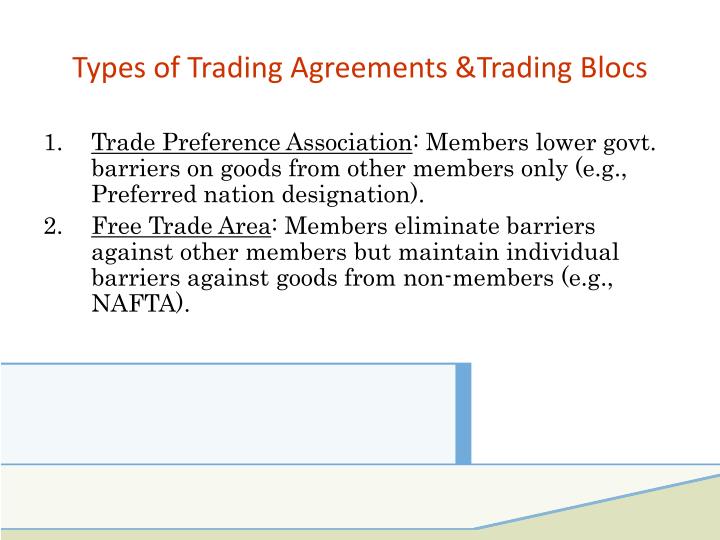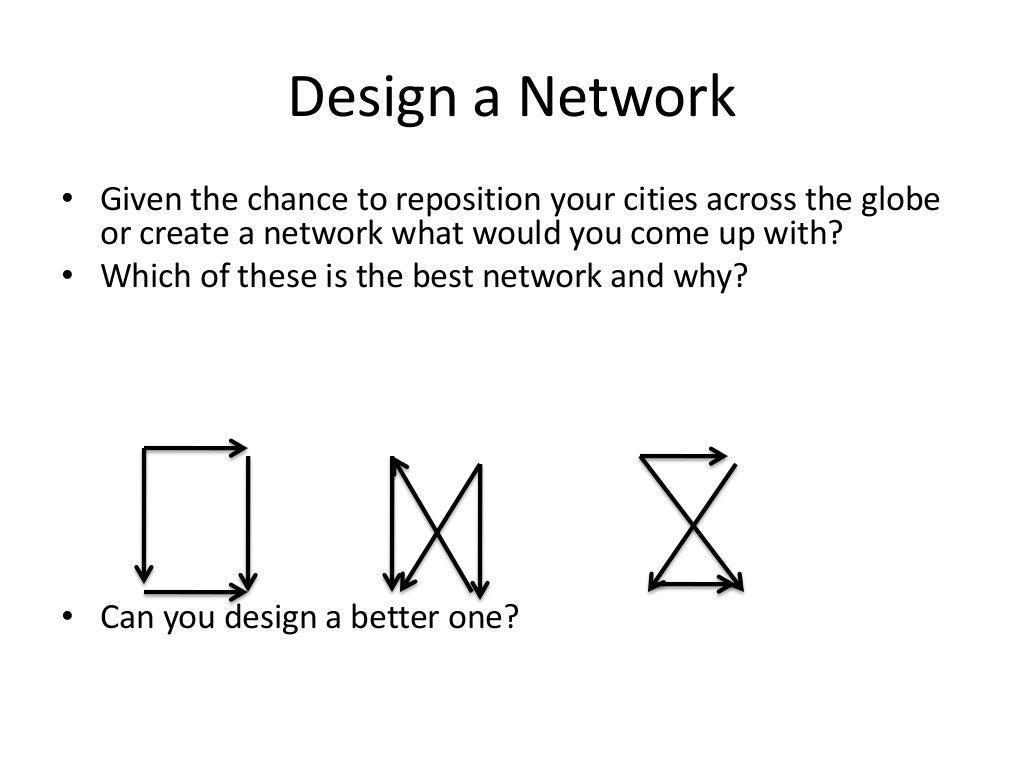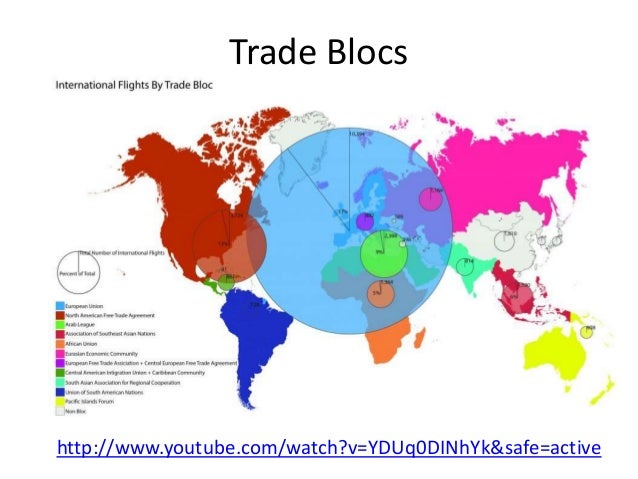


Intra-Mercosur merchandise trade (excluding Venezuela) grew from USD 10 billion at the inception of the trade bloc in 1991, to $88 billion in 2010 Brazil and Argentina accounted for 43% of this total.The Common Market of the Southern Cone (MERCOSUR).

Trade agreements are becoming a growing force for trade liberalization the development of such agreements provides for tremendous opportunities for US companies doing business in Latin America and North America.
#TRADE BLOCS DEFINITION FREE#
Free trade areas and customs unions eliminate trade barriers between member countries while maintaining trade barriers with nonmember countries.Such agreements are designed to facilitate trade through the establishment of a free trade area customs union or customs market.Regional trading blocs represent a group of nations that join together and formally agree to reduce trade barriers among themselves.In terms of combined GDP of its members, the trade bloc is the largest in the world as of 2010.It superseded the Canada – United States Free Trade Agreement between the U.S.The North American Free Trade Agreement (NAFTA) is an agreement signed by the governments of Canada, Mexico, and the United States, creating a trilateral trade bloc in North America.NAFTA is an agreement signed by Canada, Mexico, and the United States, creating a trilateral trade bloc in North America.
 The North American Free Trade Agreement (NAFTA). Since 1997, more than 50% of all world commerce was conducted under the auspices of regional trade blocs, such as NAFTA. For better or for worse, trade blocs are prevalent. However, entering a trade bloc also strengthens ties between member parties. The North American Free Trade Agreement (NAFTA) is an example of a formal trade bloc. A trade bloc is an agreement where regional barriers to trade are reduced or eliminated among the participating states. These could be FTAs or it could even be joining new trade blocs, though it’s unlikely we would enter a similar arrangement to that we had with the EU.Examples of trading bloc in the following topics: Once the UK leaves the EU it will be free to negotiate new arrangements with new partners. The Eurozone within the EU is an example of an Economic Union but is not compulsory for all members. This can include things like taxation, interest rates, and currency. This goes even further than a Common Market and includes common economic policies. Common Markets include the reduction of restrictions on the movement of factors of production such as people and finance, as well as tariffs and quotas. This form of trade bloc removes tariff barriers for members but requires them to adopt common tariffs, quotas, and standards for third parties. Examples include the North American Free Trade Agreement (NAFTA) and the Comprehensive Agreement for Trans-Pacific Partnership (CPTPP). This arrangement enables members to trade without tariffs (or with reduced tariffs) but allows individual members to negotiate trade deals with third parties. There are different forms that a trade bloc can take, as follows: The disadvantage is that no single nation within the trade bloc is permitted to seek its own FTAs with third parties. The advantage of this is that the trade bloc will be attractive to third parties as a trade partner and this can help it secure favourable FTAs that benefit all members. The trade bloc negotiates FTAs as a single entity. To allow for smooth trade, many common standards are adopted across all nations in the trade bloc such as food and safety standards. It also reduces or removes restrictions on the movement of factors of production such as people and finance. What does a trade bloc mean for members?Ī trade bloc like the EU means that members can trade with each other without incurring tariffs on their goods. It means that all the nations within it can trade freely with each other and any nation within it can trade with third parties who have a Free Trade Agreement (FTA) with the trade bloc. So, what is a trade bloc and how will leaving one affect the UK?Ī trade bloc is a multilateral agreement between several nations. Trade blocs are something that we have heard a lot about since 2016 when the UK voted to leave the largest trade bloc in the world: the EU. What is a trade bloc in international trade? And what types of trade bloc are there?
The North American Free Trade Agreement (NAFTA). Since 1997, more than 50% of all world commerce was conducted under the auspices of regional trade blocs, such as NAFTA. For better or for worse, trade blocs are prevalent. However, entering a trade bloc also strengthens ties between member parties. The North American Free Trade Agreement (NAFTA) is an example of a formal trade bloc. A trade bloc is an agreement where regional barriers to trade are reduced or eliminated among the participating states. These could be FTAs or it could even be joining new trade blocs, though it’s unlikely we would enter a similar arrangement to that we had with the EU.Examples of trading bloc in the following topics: Once the UK leaves the EU it will be free to negotiate new arrangements with new partners. The Eurozone within the EU is an example of an Economic Union but is not compulsory for all members. This can include things like taxation, interest rates, and currency. This goes even further than a Common Market and includes common economic policies. Common Markets include the reduction of restrictions on the movement of factors of production such as people and finance, as well as tariffs and quotas. This form of trade bloc removes tariff barriers for members but requires them to adopt common tariffs, quotas, and standards for third parties. Examples include the North American Free Trade Agreement (NAFTA) and the Comprehensive Agreement for Trans-Pacific Partnership (CPTPP). This arrangement enables members to trade without tariffs (or with reduced tariffs) but allows individual members to negotiate trade deals with third parties. There are different forms that a trade bloc can take, as follows: The disadvantage is that no single nation within the trade bloc is permitted to seek its own FTAs with third parties. The advantage of this is that the trade bloc will be attractive to third parties as a trade partner and this can help it secure favourable FTAs that benefit all members. The trade bloc negotiates FTAs as a single entity. To allow for smooth trade, many common standards are adopted across all nations in the trade bloc such as food and safety standards. It also reduces or removes restrictions on the movement of factors of production such as people and finance. What does a trade bloc mean for members?Ī trade bloc like the EU means that members can trade with each other without incurring tariffs on their goods. It means that all the nations within it can trade freely with each other and any nation within it can trade with third parties who have a Free Trade Agreement (FTA) with the trade bloc. So, what is a trade bloc and how will leaving one affect the UK?Ī trade bloc is a multilateral agreement between several nations. Trade blocs are something that we have heard a lot about since 2016 when the UK voted to leave the largest trade bloc in the world: the EU. What is a trade bloc in international trade? And what types of trade bloc are there?








 0 kommentar(er)
0 kommentar(er)
